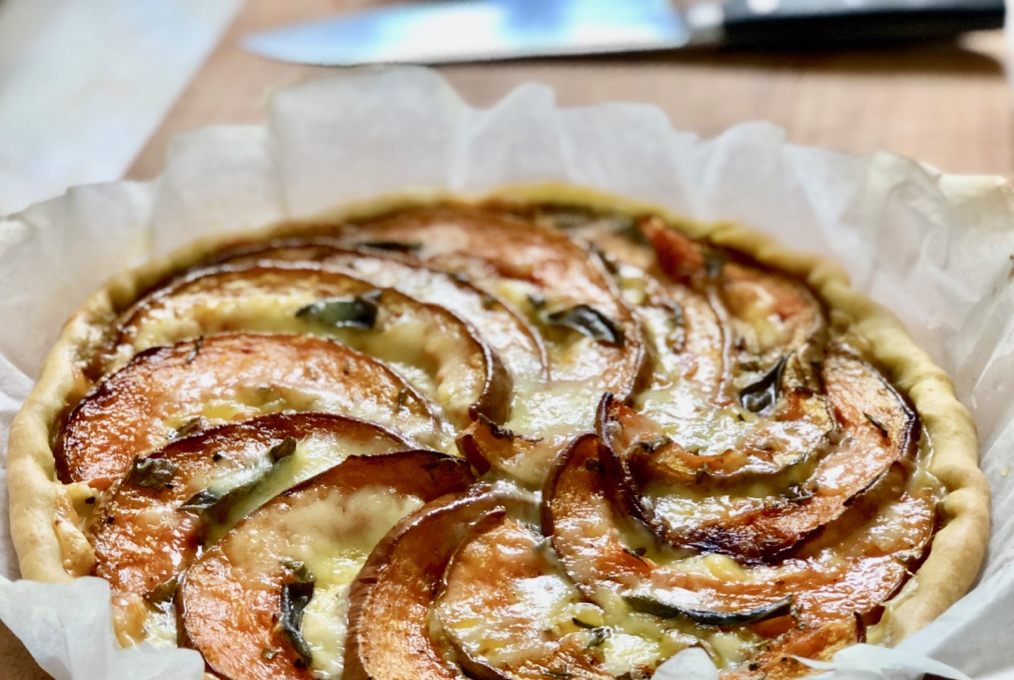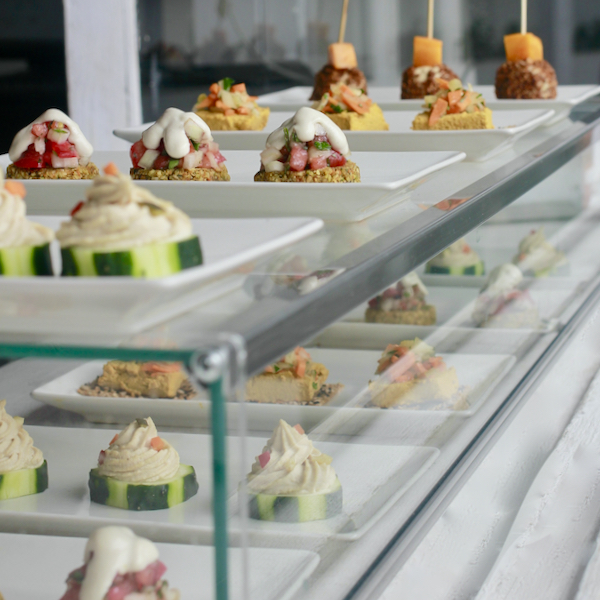
On a recent trip to Seville, my friend Manel lent me a book by the Korean philosopher Byung-Chul Han: The Disappearance of Rituals. The book talks about lifelong rituals (holiday gatherings, family meals, religious celebrations …) and how our current lifestyles reduces, eliminates or makes them expendable. Highly recommended, when you read it is inevitable to see your personal changes in recent years.
With these reflections in the back of my mind I was reading the new food guide from the US Government, US Dietary Guidelines 2020-2025 (another brick, if I may) and, oh, surprise! For the first time it includes the recommendation to increase the number of weekly meals in family/group as a habit of healthy eating. This coincidence in two such different books made us decide to talk about the importance of celebrating home food rituals.
We do it with an invitation to make this Pumpkin and Sage Crostata, an Italian savory pie that elevates roasted pumpkin to its maximum heights. An ideal four-handed recipe to make with the help of the house’s kids or with whom you want to have a time of conversation and fun. If you were in doubt about whether or not you like pumpkin, this crostata will make you change your mind.

In the United States, the frequency of group/family meals continues to decline. Group meals are being displaced by “solo” meals: eating alone in front of the computer, in the car or while watching television, listening to music or entertaining with the mobile phone. Numerous studies point out the negative effects of the habit of eating alone. This is a good summary of the situation.
There are two main reasons for negative effects of “solo” eating. In the first place, we get used to eating unhealthy foods for a question of convenience. Secondly, we isolate socially in a progressive loss of the sense of community. As Byung-Chul Han says, in the long run, the loss of rituals leads to the disorientation of the individual.
As the usual response to this type of messages is I am very busy! many countries set up specific campaigns to promote group/family meals. The champion is The Family Dinner Project, an open initiative from the Harvard University context providing recipes, planning guides, conversation topics, and tools to increase group meals. Check their website for a practical know-how to join the gathering wave.
A key recommendation in all these initiatives is to gather to cook together: prepare the ingredients, talk about what we eat, cook and have a fun time around food. Our Pumpkin and Sage Crostata recipe is ideal to enjoy in the kitchen. Step one is to prepare the ingredients (the pumpkin and the dough – if you decide to make it at home). Step two is to assemble the pie (as in the photo, ready to go in the oven). Step three is baking and step four is … let’s eat!

The crostata is a crunchy pie with a mouth watering filling of pumpkin and ricotta and accents of fresh herbs. A Mediterranean take on fall food, pumpkin, and home baked pies. The trick of this dish? Sage, whith its refreshing vegetable liquor flavoring the pie. Or is it the multi-handed work that makes it so irresistible? As Byung-Chul Han would say, less likes and more hitting the kitchen knife!
- 1 roll of puff pastry or shortcrust pastry if we make it at home (see below)
- 600 gr of Butternut squash (with the skin)
- 250 gr of goat / sheep ricotta
- 200 gr of soft sheep cheese cut into cubes
- 1 sprig of fresh rosemary (or a tablespoon dried leaves)
- 1 sprig of fresh sage with about 10 leaves
- Extra virgin olive oil
- Sea salt
- Black pepper
- For the shortcrust pastry (optional)
- 200 gr of flour
- 80 gr of extra virgin olive oil
- 70 gr of cold water
- A pinch of sea salt
- Wash the pumpkin well (we are going to use the skin)
- Cut the pumpkin into 1 cm thick half moons and season with olive oil, salt, pepper and rosemary.
- Place them on parchment paper in a pan and bake at 180 C for 25-30 minutes.
- Meanwhile, you can make the shortcrust pastry (optional)
- Check that the pumpkin is roasted by pricking with a fork, remove from the oven and reserve.
- In a 22-24 cm diameter mold, place the parchment paper, impregnate with a little olive oil and spread the puff pastry or shortcrust.
- Spread the ricotta evenly on the bottom and place the pumpkin pieces as in the photo.
- Fill in the gaps between the pumpkin with the cubes of soft cheese and distribute the sage leaves on the surface.
- Fold excess dough inward creating an even edge
- Bake at 200 C for 25-30 min. depending on the mold you use.
- For the shortcrust pastry
- In a food processor, mix the flour with the oil and salt until smooth (2-3 min). Add the water and process until the dough is homogeneous (2-3 min).
- Lightly work the dough on a flat, smooth surface until you get a compact ball of dough.
- Cover with plastic wrap and refrigerate for 30 min. before extending it.
- Spread a parchment paper, place the ball of dough in the center and roll it out until you have a disk about 30 cm in diameter.
- Place the paper with the dough spread over the mold. You are now ready to fill.











Leave a Reply